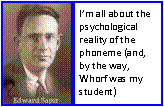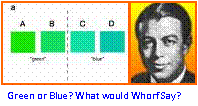all the tests are cumulative. they always will be. you don't need to ask.
everything from QuiXams 1 & 2 will also be covered on the midterm.
you need to know the three part articulatory descriptions for the consonants and the vowels, as stated in the chaplets and in class. you need to be able to write out the consonant and vowel charts from memory on the scrap paper that will be provided. knowing the chart will ensure that you can answer the questions about the articulatory descriptions. additionally you need to know the three diphthongs we covered in class as well as the schwar and the caret+r, which are also on the 'legendary' IPA chart i made for you with key words showing how to pronounce all of the symbols in the beginning, middle and end of a word.
additionally you are supposed to know what a natural class is now and if i give you a string of IPA symbols representing phones you are supposed to be able to say what natural class they all belong to and/or which one doesn't belong and why. sesame street all over again.
you need to know the difference between a phone and a phoneme, and the corresponding types of transcription (broad for phonemic and narrow for phonetic). you should remember the four allophones of /t/ that i presented in class and in the chaplet and be able to recognize them in some broad transcriptions. you should also know about the pen/pin vowel phonology rule for mid/southwest dialects int he U.S. as discussed in the chaplet and in class. those two examples are good examples of phonology processes you already know and love and use unconsciously. so you should be able to explain what a phonology problem is based on those examples even though i am not going to give you a phonology problem in English or any other language on the midterm.
you need to know what a minimal pair is and what it proves. the chaplet is self explanatory on this point and we also covered it in class.
IPA: you don't have to be able to write in the IPA although i'll probably give you a point or two of extra credit if you transcribe your name really well in IPA (potentially two points for first and last name highly accurate). you do have to be able to read simple words and sentences in a broad transcription(with no more detail than i have presented in class).
everything you had to memorize (or should have memorized) for QuiXams 1 & 2 you wil still need to know, (which should be obvious but for some reason still eludes a few students).
if you have studied the chaplets and memorized the information you should have no trouble with the test tomorrow. i told you linguistics was not easy and that it requires actual preparation before class, every class, and that if you don't do that preparation it doesn't matter what i do in class because you won't have the materials in your head to work with. the fact that almost no one answers me when i ask you basic questions in class about the material we covered the class before suggest to me that you are not taking that warning seriously. hopefully you are figuring this out and getting back on track.
study to show yourself approved, hard workers who don't need to be ashamed...












